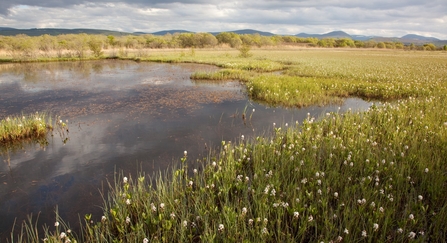Blog written by Alfie, a member of the Young People's Forum:
Many peatlands across the Northern Hemisphere were formed in the aftermath of the Last Glaciation 12,000 years ago as glaciers retreated towards the poles. A lack of oxygen in waterlogged landscapes leads to a diminished rate of decay by aerobic bacteria and other organisms, enabling the accumulation of partially decomposed plant matter. This plant matter forms organic peat soils which allows the absorbance of more water leading to peatland expansion.
What is the link between peat and carbon?
The carbon storing potential of peat comes from the fact that it is composed of partially decayed vegetation. Vegetation sequesters carbon through photosynthesis and that carbon is returned to the atmosphere as carbon dioxide when the vegetation decomposes. In peatlands, the vegetation doesn’t fully decay because of the anoxic conditions so a significant quantity of carbon is stored in the peat. Peatlands tend to also emit significant amounts of other greenhouse gases, notably methane, but the climatic effect of that is counteracted in healthy peatlands by the inhibition of carbon dioxide emissions from decomposition. Peatlands are responsible for the storage of 3.2 billion tonnes of carbon in the UK alone.
Unfortunately, 80% of the UK’s peatlands are damaged in some way by human activity which limits their capacity for carbon sequestration. This damage is usually from drainage in order to convert the peatland into cropland or forest to make it more economically productive. Without waterlogging, decomposition returns to a normal rate and large quantities of carbon dioxide are emitted into the atmosphere.


